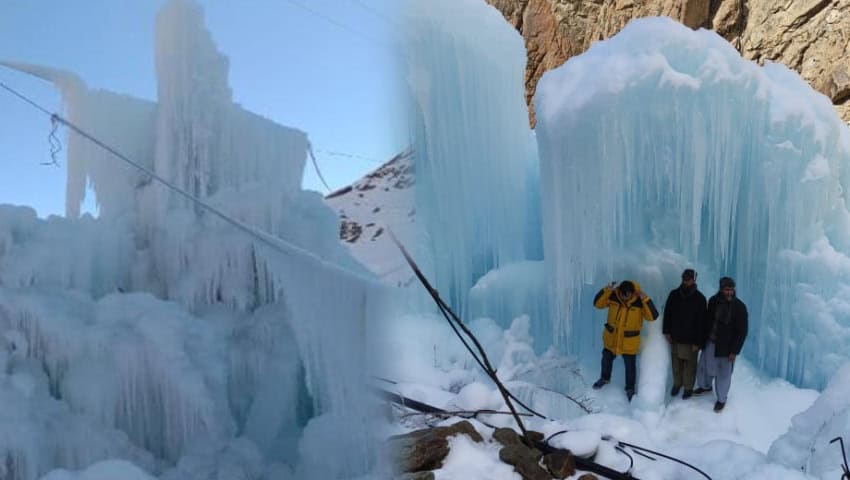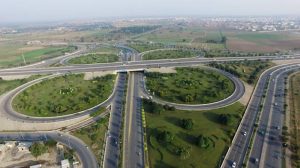GILGIT – In the high-altitude and sparsely populated area in the north of Pakistan, experts of Gilgit Baltistan have decided to do something about the worsening situation of climate change.
The population of the northernmost region is entirely dependent on glaciers and snowmelt to irrigate crops and now experts found a unique way to deal with an acute water shortage problem that hampers crop cultivation.
Experts of the University of Gilgit-Baltistan, Karakoram International University Gilgit, and WAFA Foundation in collaboration with the local residents have made five artificial glaciers in the region where global warming hit hard especially in the last few years.
The artificial glaciers also known as ice stupas were formed to collect and freeze abundant water in the cold weather to be used in the dry season. A 50-foot artificial glacier can be created in a couple of weeks which can store more than a quarter of a million gallons of water.
These artificial glaciers have been developed under the Glacier Lake Outburst Flood (GLOF) project of the Ministry of Climate Change to mitigate the effects of climate change and to ensure continuous water supply.
Reports in local media claimed that two glaciers were developed in Skardu, the expedition hub in Gilgit–Baltistan, while one each has been made in Nagar, Hussainabad, and Khuwardu. Four of these glaciers stand above 4,000 meters while one is higher than 3,200 meters.
The artificial glaciers were connected to a water source on higher ground through a polyethylene tube to draw water downhill. Galvanized-iron pipes are used to carry the water collected at the base of the ice to a sprinkler system which sprays the water on the ice stupa to freeze water.
United Nations Development Program (UNDP) Pakistan official, Mehvish Bukari, speaking on the development said the UN agency will observe these glaciers on a weekly basis to ensure local residents receive uninterrupted water supply during summers in the coming years.
Kazakhstan, Kyrgyzstan, China, India, and Nepal have also created artificial glaciers in the region to deal with water scarcity amid climate change. GB residents face similar problems as those in other high altitude regions as they need water to sustain their livelihoods, but changing weather patterns are shrinking the region’s glaciers, intensifying droughts, and triggering flash floods.
The Global Climate Risk Index of 2020 has placed the South Asian country on the fifth spot on the list of countries most vulnerable to climate change.
Pakistan lost around 10,000 lives, suffered economic losses worth billions, and witnessed more than 150 extreme weather events that show the country’s vulnerability to climate change.













